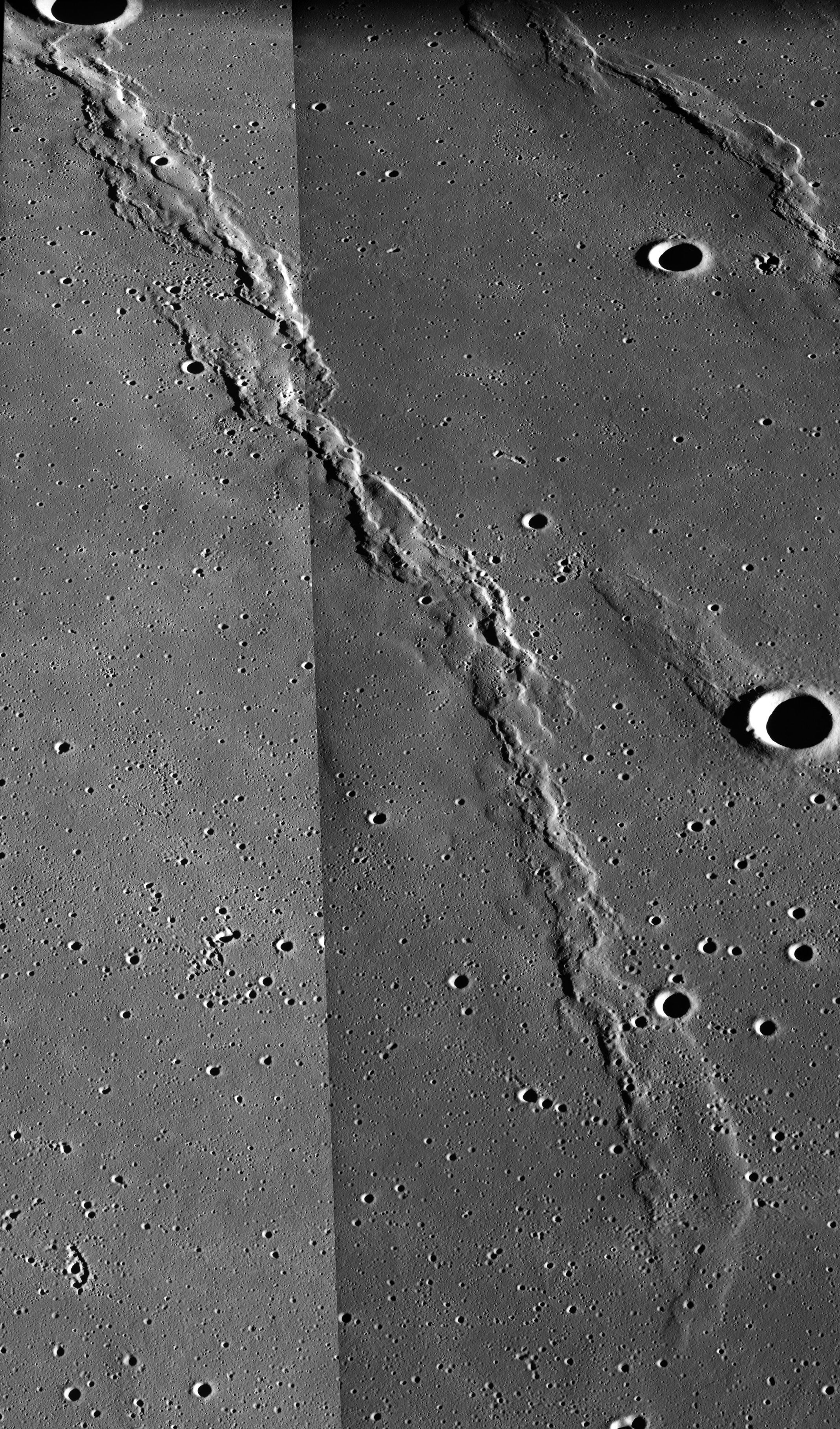|
Dorsum Scilla
Dorsum Scilla is a wrinkle ridge at in Oceanus Procellarum on the Moon. It is 108 km long and was named after Agostino Scilla in 1976.Dorsum Scilla Gazetteer of Planetary Nomenclature, International Astronomical Union (IAU) Working Group for Planetary System Nomenclature (WGPSN) References {{moon-stub Ridges on the Moon, Scilla ...[...More Info...] [...Related Items...] OR: [Wikipedia] [Google] [Baidu] |
Dorsum Scilla AS15-P-0360-0361
Dorsum (plural Dorsa) is a Latin word. In science, it may refer to: Anatomy * Dorsum (anatomy), the upper side of an animal, or the back in erect organisms **Dorsum humanum, the human back * Dorsum of foot, the top of the foot * Dorsum of hand, the back of the hand * The back of the tongue, which is used for articulating dorsal consonants Other uses * Dorsum (moth), ''Dorsum'' (moth), genus of moths of the family Erebidae * Dorsum (astrogeology), wrinkle ridges found on planets or moons * Theta Capricorni, a star on the back of Capricornus {{disambiguation ... [...More Info...] [...Related Items...] OR: [Wikipedia] [Google] [Baidu] |
Wrinkle Ridge
A wrinkle ridge is a type of feature commonly found on lunar maria, or basalt plains. These features are low, sinuous ridges formed on the mare surface that can extend for up to several hundred kilometers. Wrinkle ridges are tectonic features created after the lava cooled and solidified. They frequently outline ring structures buried within the mare, follow circular patterns outlining the mare, or intersect protruding peaks. They are sometimes called ''veins'' due to their resemblance to the veins that protrude from beneath the skin. Wrinkle ridges are named with the Latin designation ''dorsum'' (plural ''dorsa''). The standard IAU nomenclature uses the names of people (generally scientists) to identify wrinkle ridges on the Moon. For example, the Dorsa Burnet are named for Thomas Burnet, and the Dorsum Owen is named after George Owen of Henllys. Wrinkle ridges can also be found on Mars, for example in Chryse Planitia, on several of the asteroids that have been visited by sp ... [...More Info...] [...Related Items...] OR: [Wikipedia] [Google] [Baidu] |
Oceanus Procellarum
Oceanus Procellarum ( la, Ōceanus procellārum, lit=Ocean of Storms) is a vast lunar mare on the western edge of the near side of the Moon. It is the only one of the lunar maria to be called an "Oceanus" (ocean), due to its size: Oceanus Procellarum is the largest of the maria ("seas"), stretching more than across its north–south axis and covering roughly , accounting for 10.5% of the total lunar surface area. Characteristics Like all lunar maria, Oceanus Procellarum was formed by ancient volcanic eruptions resulting in basaltic floods that covered the region in a thick, nearly flat layer of solidified magma. Basalts in Oceanus Procellarum have been estimated to be as young as one billion years old. Unlike the other lunar maria, however, Oceanus Procellarum may or may not be contained within a single, well-defined impact basin. Around its edges lie many minor bays and seas, including Sinus Roris to the north, and Mare Nubium and Mare Humorum to the south. To the northeas ... [...More Info...] [...Related Items...] OR: [Wikipedia] [Google] [Baidu] |
Moon
The Moon is Earth's only natural satellite. It is the fifth largest satellite in the Solar System and the largest and most massive relative to its parent planet, with a diameter about one-quarter that of Earth (comparable to the width of Australia). The Moon is a planetary-mass object with a differentiated rocky body, making it a satellite planet under the geophysical definitions of the term and larger than all known dwarf planets of the Solar System. It lacks any significant atmosphere, hydrosphere, or magnetic field. Its surface gravity is about one-sixth of Earth's at , with Jupiter's moon Io being the only satellite in the Solar System known to have a higher surface gravity and density. The Moon orbits Earth at an average distance of , or about 30 times Earth's diameter. Its gravitational influence is the main driver of Earth's tides and very slowly lengthens Earth's day. The Moon's orbit around Earth has a sidereal period of 27.3 days. During each s ... [...More Info...] [...Related Items...] OR: [Wikipedia] [Google] [Baidu] |
Agostino Scilla
Agostino Scilla (10 August 1629 – 31 May 1700) was an Italian Baroque painter, paleontologist, geologist, numismatist, and a pioneer in the study of fossils and in scientific illustration. In addition to his paintings, he published an early text on paleontology: ''La vana speculazione disingannata dal senso'' ("Vain Speculation Undeceived by Sense", 1670) which was introduced to English audiences by William Wotton of the Royal Society in 1696. He was among the first to promote a scientific understanding of fossils in contrast to fantastic Biblical and divine interpretations. Biography The son of a notary in Messina in Sicily, Scilla studied under Antonio Barbalunga in Messina and later Andrea Sacchi in Rome and became a painter. In Messina, he painted frescoes in the churches of San Domenico and of the Nunziata de' Teatini. Among his canvases are a depiction of ''Death of San Ilarione'' painted for the church of Sant'Ursula. His frescos in the Cathedral of Syracuse date f ... [...More Info...] [...Related Items...] OR: [Wikipedia] [Google] [Baidu] |


.png)
